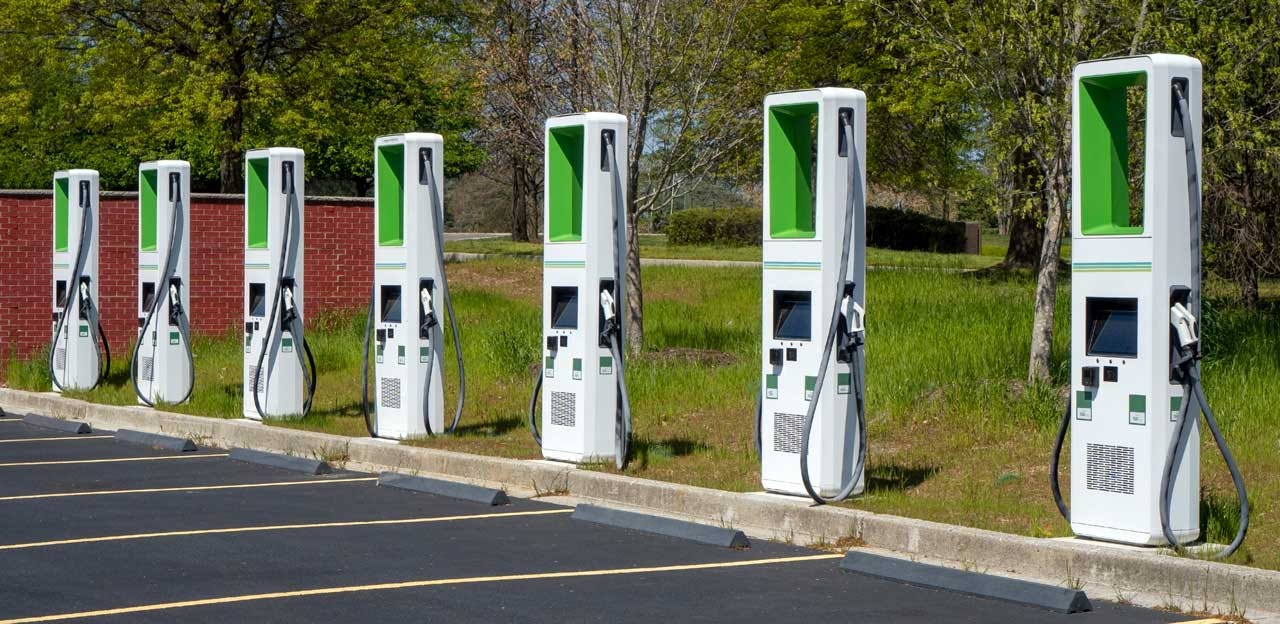🔋In Need Of A Charge
What is going on with charging stations?
If you enjoy, press the heart button on this article! I would greatly appreciate it :)
The White House has an EV target of 50% of all new vehicle sales electric by 2030. While I have suggested that this arbitrary target is not the optimal path forward, I was not consulted and it’s the administration's goal nonetheless. The government has passed several laws with copious subsidies and benefits to achieve this goal. The Infrastructure Act and the Inflation Reduction Act are the most aggressive spending packages on clean energy and climate change to date. There is one problem, under optimistic scenarios, we are only expected to reach 30% by then, missing the target by a tremendous amount. So what is going on?
While cost remains the primary concern for most drivers despite the subsidies, today I will focus on charging, the second biggest concern for prospective EV buyers. Most new technologies solve problems of the previous one or are significant improvements. Batteries, even the holy grail of a Li solid-state battery will never compete with the energy density of gasoline. Further, EV charging is slower and less convenient than filling up gasoline, even at a Tesla fast charging station.
The other issue with EV charging is the infrastructure. While often used as an argument against adopting EVs, this problem is entirely solvable. With equivalent access to EV chargers as there are gas stations, this is not a real problem in theory. Add in the ability to charge at home and it is more accessible. That is why from a product standpoint, Ford’s new initiative to include free charging units seems like it would’ve been a no-brainer. It is puzzling why companies would not include these near-essential products which are inconsequential in the overall cost of a vehicle and only add friction to the process of buying an EV.
The US is far from having enough public EV charging infrastructure, which makes the current analysis about buying an EV or ICE lean towards the status quo. Practically speaking, EV charging is not that convenient currently. Of course, it may be for you, but on average or for the marginal buyer, definitely not. First, unless you own a home, you have to rely on a sparse network of chargers located primarily in urban areas.
80% of EV charging takes place at home currently, which doesn’t necessarily show anything. If anything it shows that wealthier people who have homes already are the ones buying EVs, and it is convenient for them to charge at home. 2/3rds of people in the US own a home and less for the working-age population. For these people, it is extremely convenient to have an EV minus any range constraints you may have.
For the more than 1/3rd of working Americans who don’t own their own home, it is extremely inconvenient to own an EV. Some urban workplaces offer EV charging, but there aren’t enough to satisfy the breadth of adoption that is targeted. Ideally, there would be many chargers at all workplaces around the US that allow renters to charge their cars.
If EV charging stations were cash generators, companies would be raking in money. On the contrary, one of the industry leaders, Chargepoint, has seen declining revenue and negative earnings. There seems to be little incentive to build these outside of some government initiatives to reduce the installation cost.
Speaking of government incentives, the federal government has even put money towards this cause. The 2021 Infrastructure Act allocated $7.5 billion towards EV charging stations, but only 7 have been built so far. This is very slow progress, especially considering the 2030 goal. Readers know I'm not the most optimistic about government involvement in the economy, but it is pretty clear that this money is not finding its way into the builder’s pockets. One issue is that the policy specifically targets low-income areas, which ironically have less need for charging networks because of the cost of purchasing an EV. Bureaucracy and poorly aligned incentives are likely stagnating the buildout with this money, some going as far as blaming DEI initiatives.
Regardless, current government initiatives are not enough, at least yet, to spur the charging infrastructure boom needed for every American to check that off their list of concerns before buying an EV. Solutions to other issues like charge time, range, cost, and safety are more opaque, however charging station availability has a clear solution.
With this solvable hurdle still in the way on top of the others, EV adoption will struggle to reach escape velocity as proponents suggest. With companies like Chargepoint struggling with declining revenues and inefficient government bureaucracy with dispatching subsidies, the number two reason for people to avoid EVs will be an issue for some time. Until next time,
-Grayson
Leave a like and let me know what you think!
If you haven’t already, follow me at TwitterX @graysonhoteling and check out my latest post on notes.
Socials
Twitter/X - @graysonhoteling
LinkedIn - Grayson Hoteling
Archive - The Gray Area
Let someone know about The Gray Area and spread the word!
Thanks for reading The Gray Area! Subscribe for free to receive new posts and support my work.



